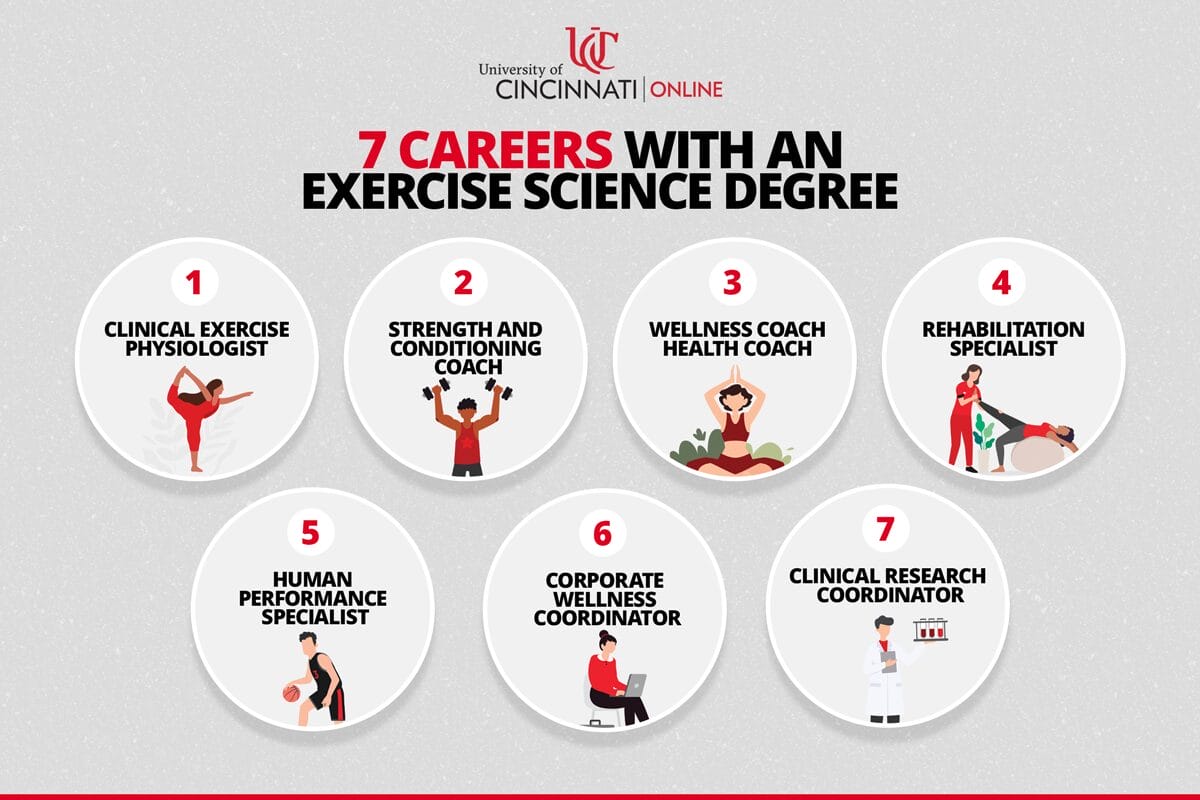What Can You Do With an Exercise Science Degree? 7 Jobs to Consider

Completing an exercise science program demonstrates a deep understanding of human performance, clinical exercise physiology, and strength and conditioning. It encompasses knowledge of physiological adaptations to exercise and strength training, and the role of nutrition in optimizing performance and recovery. This expertise contributes to evidence-based strategies that enhance movement efficiency, injury prevention, and improve overall health and wellbeing. Still, you’re left with a question, what can you do with an exercise science degree?
What Is an Exercise Science Degree?
An exercise science degree provides a comprehensive understanding of how physical activity influences the human body, bridging multiple disciplines such as biomechanics, nutrition, and physiology. You'll develop the expertise to assess movement patterns, design evidence-based training programs, and apply clinical exercise principles to enhance performance, rehabilitation, and overall well-being. These skills open diverse career paths, empowering you to help clients, patients, or students optimize their health and quality of life through exercise.

Is the Field of Exercise Science Growing?
The field of exercise science is expanding rapidly, driven by increasing awareness of health, fitness, and the role of exercise in disease prevention and rehabilitation. Currently, 83% of Americans report dissatisfaction with their weight, and 79% say they would rather be incredibly fit than famous. This growing health consciousness is reflected in the rising demand for professionals in exercise science, human performance, and clinical exercise. Specifically, the exercise physiology sector is projected to grow by 10.3% between 2022 and 2032, supporting an already established workforce of 16,500 exercise physiologists in the U.S. Additionally, with over 42% of American adults classified as obese and millions managing chronic conditions such as diabetes and cardiovascular disease, the need for experts in strength and conditioning, rehabilitation, and wellness programming has never been greater.
What 7 Careers Can You Pursue With an Exercise Science Degree?
With a degree in exercise science, an array of career opportunities opens up. Those include the seven in this list:
- Clinical Exercise Physiologist – Works in healthcare settings to develop exercise programs for individuals with chronic diseases such as heart disease, diabetes, and obesity.
- Strength and Conditioning Coach – Designs and implements training programs for athletes to improve performance, prevent injuries, and enhance overall fitness.
- Wellness Coach/Health Coach – Guides clients in improving their physical health through exercise, nutrition, and lifestyle changes to prevent chronic disease and enhance well-being.
- Rehabilitation Specialist – Assists in recovery programs for individuals recovering from injuries, surgeries, or medical conditions, often working alongside physical therapists.
- Human Performance Specialist – Works with tactical populations (military, law enforcement, first responders) or elite athletes to optimize physical performance and resilience.
- Corporate Wellness Coordinator – Develops and manages health and fitness programs for employees in corporate settings to promote workplace well-being and productivity.
- Clinical Research Coordinator – Manages and oversees clinical trials related to exercise interventions, rehabilitation programs, and human performance research, ensuring compliance with protocols and data collection standards.
Common Skills Needed in Exercise Science Careers
A degree in exercise science equips professionals with the knowledge and skills to improve health, fitness, and human performance across diverse populations. Whether working with athletes, clinical patients, or general populations, key competencies include:
- Analytical Thinking – Assessing movement patterns, designing evidence-based training programs, and interpreting physiological data to optimize health and performance.
- Strong Communication – Explaining complex physiological concepts, medical terminology, and exercise prescriptions in ways that clients, patients, and athletes can understand.
- Physical Demonstration and Coaching – Guiding individuals through proper exercise techniques, rehabilitation protocols, and strength and conditioning programs.
- Empathy and Adaptability – Understanding the needs of diverse populations, including individuals recovering from injuries, managing chronic conditions, or striving for peak performance.
Is Exercise Science Right for You?
If you have a passion for human movement, sports performance, rehabilitation, or preventative healthcare, exercise science may be the perfect field for you. This degree offers opportunities to work with athletes at all levels, clinical populations managing chronic diseases, and individuals seeking to enhance their overall well-being. Those with a strong interest in biomechanics, physiology, and evidence-based training methods will find this field both engaging and impactful.
Advance Your Career with a Master’s in Exercise Science
If you’ve already earned an associate’s or bachelor’s degree in exercise science and want to expand your career opportunities, a master’s degree is the next logical step. The University of Cincinnati’s Master of Science in Exercise and Sport Science is designed for working professionals, offering a fully online, 30-credit program with flexible scheduling. Military and veteran scholarships are also available, making advanced education more accessible. Take the next step in your career—contact UC today to learn more!
Frequently Asked Questions (FAQs)
Is exercise science the same as kinesiology?
Exercise science and kinesiology are closely related but have key distinctions. Kinesiology is a broader field that studies human movement, while exercise science focuses more specifically on how exercise impacts health, performance, and rehabilitation. Both fields share similar coursework, but exercise science applies this knowledge more directly in sports performance, clinical exercise, and preventative healthcare settings.
Is exercise science in demand? What is the job outlook?
Yes, demand for exercise science professionals is growing due to increased awareness of preventative healthcare, rehabilitation, and performance optimization. The exercise physiology field is projected to grow by 10.3% between 2022 and 2032, with strong growth also seen in physical therapy assistants, occupational therapists, and wellness coaching roles. This trend reflects a rising emphasis on health, fitness, and sports performance across diverse populations.